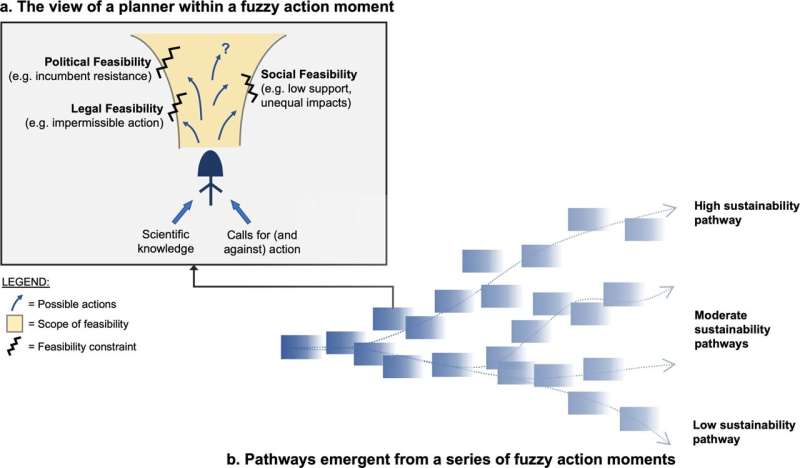Creating a sustainable city: Time, common sense and persistence

Cities want to become more sustainable but bringing that ambition to life can be quite the challenge. Academics have to work together with urban planners to help realize sustainability transformations. But when transformation does take place, it is unlikely to come from a single radical moment of change; instead, it requires persistent small steps over time. There is always an opportunity to take such a step, according to Professor of Environmental Law Niko Soininen and collaborators. Their new paper on the challenge of finding feasible action for urban transformation was published in Urban Sustainability.
According to the researchers, transformative action needs to navigate political, social and legal feasibility. Urban planners constantly face these dilemmas, and academics may easily overlook them. But plans can run into problems, derailing promising opportunities for sustainability.
"This happened to, for example, a project in Helsinki that wanted to convert roads into green city boulevards; it encountered problems in all three areas. There were political problems, due to coalitions trying to stop the project, there were social problems because the project went against what local residents were used to, and there were legal problems where required legal provisions clashed with the project plans, among other things," Soininen and colleagues say.
Linking science and action
These obstacles make it difficult to sustainably transform a city in one fell swoop.
"Academics are often closely involved in debates on urban sustainability, but we need to get better at putting ourselves in the shoes of urban planners to find pragmatic responses to real-world dilemmas," says Soininen and colleagues.
Seeing as sustainable urban transformations are difficult to plan, the researchers argue that real transformation is more likely to happen through multiple changes that accumulate over time.
"City planners make decisions in their everyday work, and may be able to do things like nudging budgetary decisions and persuading other key decision-makers, which may not be obvious from the outside but can be very important for securing durable changes," Soininen and colleagues illustrate.
"The path ahead may be foggy, but we have to accept this and find ways to join up diverse actions to enable a transformative pathway to emerge."
More information: James Patterson et al, Finding feasible action towards urban transformations, npj Urban Sustainability (2021). DOI: 10.1038/s42949-021-00029-7














